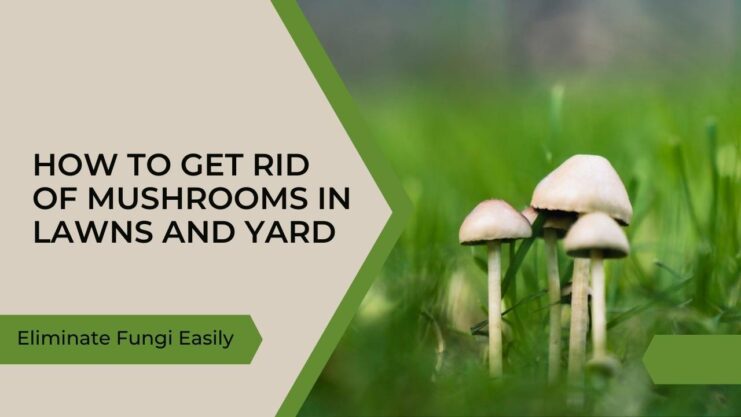Mushrooms, the unsightly fungal invaders that can plague our lawns and yards, are a common source of frustration for homeowners and gardeners alike. While they may seem harmless, these uninvited guests can quickly spread and create an eyesore in your otherwise well-manicured green space.
But fear not, dear reader! This comprehensive guide will provide you with valuable insights and effective strategies to help you get rid of mushrooms in your lawn and yard once and for all. With our expert tips and easy-to-follow instructions, you’ll be well on your way to reclaiming your pristine outdoor haven.
Understand the Mushroom Menace
To effectively tackle the fungi problem, it’s essential to first understand why they appear in the first place. Mushrooms are the fruiting bodies of fungi that grow beneath the soil, breaking down organic matter like dead roots, leaves, and wood. When the conditions are right—typically warm, moist, and shady—mushrooms sprout and reveal themselves to the world.
Adjust Your Lawn Care Routine
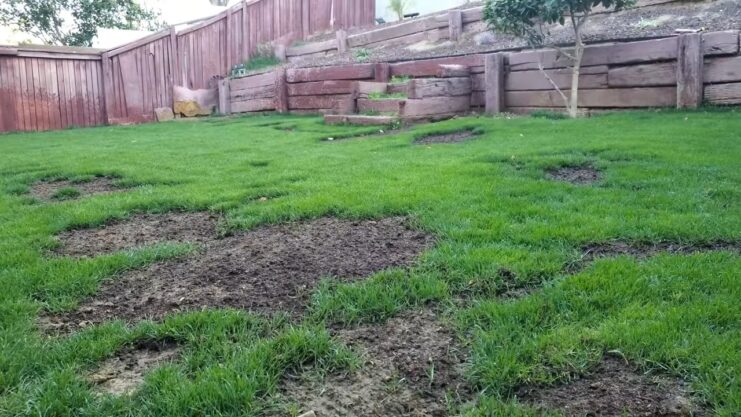
By making a few simple tweaks to your lawn care routine, you can create an environment that’s less hospitable to mushrooms. Consider the following adjustments:
Improve Drainage
Mushrooms thrive in damp, waterlogged conditions. Aerating your lawn can help improve drainage, preventing the buildup of moisture that fungi love. You can use a lawn aerator or garden fork to create small holes in the soil, allowing water and air to penetrate more effectively.
Reduce Shade
Fungi favor shady environments, so trim back overhanging branches and bushes to let in more sunlight. This will help dry out the soil and make it less inviting to mushrooms.
Mow Regularly
Regular mowing prevents the accumulation of grass clippings and other organic matter, which mushrooms feed on. Be sure to remove the clippings after mowing to further reduce their food source.
Avoid Overwatering
Be mindful of your watering habits, as excessive moisture can encourage fungal growth. Water your lawn deeply but infrequently, allowing the soil to dry out between watering sessions.
Remove Fungi Manually
Manually removing fungi is a simple yet effective way to keep them at bay. As soon as you spot mushrooms in your lawn, pick them by hand or use a rake to gently uproot them. Be sure to dispose of them properly to prevent spores from spreading.
Use Natural Remedies

There are several natural remedies that can help deter mushrooms without harming your lawn. Some popular options include:
Vinegar
Mix equal parts water and white vinegar in a spray bottle, and apply the solution directly to the mushrooms. The acetic acid in vinegar can kill the fungi, but be careful not to overdo it, as vinegar can also harm grass and plants if used in excess.
Baking Soda
Sprinkle baking soda around the affected area to change the pH level of the soil and make it less appealing to fungi. Be cautious with this method, as excessive use of baking soda can harm your lawn.
Cornmeal
Scatter cornmeal over the affected area, as it contains a natural fungicide that can help combat mushroom growth. Additionally, it’s safe for your grass and other plants.
Employ Chemical Solutions
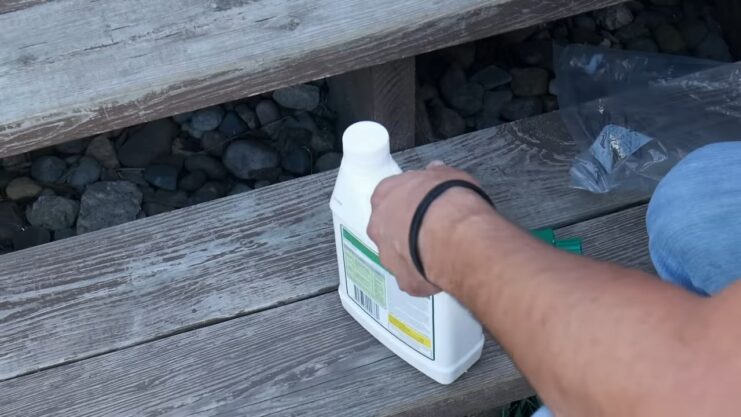
If natural remedies aren’t doing the trick, you may need to resort to chemical solutions. Fungicides containing ingredients like myclobutanil, propiconazole, or thiophanate-methyl can help control mushroom growth.
However, it’s crucial to exercise caution when using chemical solutions, as they can be harmful to the environment and other living organisms. Always follow the manufacturer’s instructions and use the product sparingly to minimize any negative impact. It’s also a good idea to consult with a professional lawn care specialist before applying any chemicals to your lawn.
Address the Underlying Causes
In some cases, fungi may be a symptom of a more significant issue in your yard. To effectively eliminate them, you’ll need to tackle these underlying problems. Here are some common causes of mushroom growth and how to address them:
Decaying Tree Roots
If you’ve recently removed a tree or there’s a dead tree stump in your yard, decaying roots may be providing a food source for fungi. To resolve this issue, consider hiring a professional to grind the stump and remove the remaining roots.
Excess Thatch
A thick layer of thatch—a buildup of dead grass, leaves, and other organic matter—can create a breeding ground for mushrooms. To remove excess thatch, use a dethatching rake or rent a power dethatcher from your local garden center.
Poor Soil Quality
Compacted, nutrient-poor soil can encourage fungi growth. To improve soil quality, incorporate organic matter like compost or well-rotted manure into the soil, and consider performing a soil test to identify any nutrient deficiencies.
Choose Resistant Grass Varieties
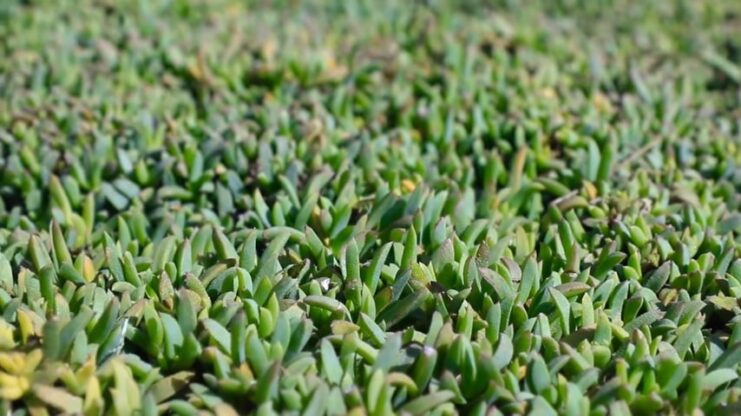
If you’re looking to reseed your lawn or establish a new one, consider opting for grass varieties that are less susceptible to fungal infections. Some species, like perennial ryegrass and fine fescues, are more resistant to diseases and fungi, making them a better choice for preventing mushroom growth in your yard.
Seek Professional Help
If you’re still struggling to get rid of mushrooms despite your best efforts, it may be time to call in the professionals. Lawn care specialists have the expertise and tools to diagnose the root cause of the problem and implement effective solutions to restore your lawn to its former glory. Don’t hesitate to reach out to a local expert if you need assistance.
Additional Strategies for Fungi-Free Lawns and Yards
Embrace Companion Planting
Companion planting, the practice of growing specific plants together to create mutually beneficial relationships, can be a useful tool in deterring mushrooms from your yard. Some plants, like marigolds, chamomile, and garlic, have natural antifungal properties that can help suppress the growth of mushrooms when planted near susceptible areas. By incorporating these plants into your garden design, you can create an environment that’s less conducive to fungal growth.
Encourage Beneficial Microorganisms
Promoting a healthy population of beneficial microorganisms in your soil can help suppress the growth of fungi, including the ones responsible for producing mushrooms. One way to do this is by applying compost tea, which is a nutrient-rich liquid made by steeping compost in water. The beneficial bacteria and fungi found in compost tea can compete with the harmful fungi, helping to keep their population in check. To make compost tea, simply soak a bag of compost in a bucket of water for 24-48 hours, then use the liquid to water your lawn and garden.
Utilize Solarization

Solarization is a technique that uses the sun’s heat to kill fungi and other pathogens in the soil. This method can be particularly effective in smaller areas, like flower beds or vegetable gardens, where mushrooms tend to appear. To solarize your soil, follow these steps:
- Clear the area of any plants, weeds, and debris.
- Water the soil thoroughly to encourage fungal growth.
- Cover the area with a clear plastic tarp, sealing the edges with soil or rocks to trap the heat.
- Leave the tarp in place for 4-6 weeks during the hottest part of the summer.
- The heat generated beneath the plastic will kill the fungi, along with other pests and weeds, making the area less favorable for fungi growth.
Install Proper Irrigation Systems
Efficient irrigation systems, like drip irrigation or soaker hoses, can help reduce excess moisture in your lawn and garden, making it less conducive to mushroom growth. These systems deliver water directly to the root zone, minimizing runoff and evaporation and ensuring that your plants receive the right amount of water without creating a damp environment that mushrooms thrive in.
Monitor Soil pH
Maintaining a balanced soil pH can help discourage the growth of fungi in your lawn and garden. Most fungi prefer slightly acidic to neutral soil, with a pH between 6.0 and 7.0. By monitoring your soil pH and making adjustments as needed, you can create an environment that’s less favorable for mushroom growth. You can test your soil pH using a home testing kit or by sending a sample to a professional soil testing lab. If your soil is too acidic, you can raise the pH by applying lime. If it’s too alkaline, you can lower the pH by applying sulfur or peat moss.
Create a Dedicated Fungal Garden
While mushrooms may be unwelcome in your lawn, they can serve a purpose in a dedicated fungal garden. By creating a separate area for mushrooms to grow, you can help prevent them from invading your main lawn and garden spaces. Designate a shady, moist corner of your yard for this purpose, and add organic matter like wood chips or leaves to encourage fungal growth. By providing a dedicated space for mushrooms, you can satisfy their need for a habitat while keeping them away from your pristine lawn.
Maintain a Healthy Lawn

A strong, healthy lawn is more resistant to fungal invasions, including mushrooms. Ensure that you’re providing your grass with the necessary nutrients, water, and care to help it thrive. Regular fertilization, proper mowing, and timely overseeding can all contribute to a robust lawn that’s better equipped to fend off mushrooms and other unwelcome intruders.
Utilize Barriers
If you have a persistent problem with fungi in specific areas of your yard, consider installing physical barriers to prevent their spread. Landscape edging, stones, or raised beds can help contain mushroom growth and stop it from encroaching on your lawn or garden.
Biological Control Agents
In recent years, researchers have been exploring the use of biological control agents—organisms that can suppress the growth of fungi—to combat mushroom infestations in lawns and gardens. Some strains of bacteria, like Bacillus subtilis and Streptomyces species, have shown promise in inhibiting the growth of various fungi. However, more research is needed to fully understand their effectiveness and safety. Keep an eye on the latest scientific developments in this field, as biological control agents may become a viable option for managing mushrooms in the future.
Educate Yourself on Local Fungi Species
While many mushrooms are harmless, some species can be toxic to humans and pets. By familiarizing yourself with the fungi native to your area, you can better assess the potential risks associated with the mushrooms in your lawn and garden. Contact your local extension office or mycological society for resources and information about the fungi species found in your region.
Closing Thoughts
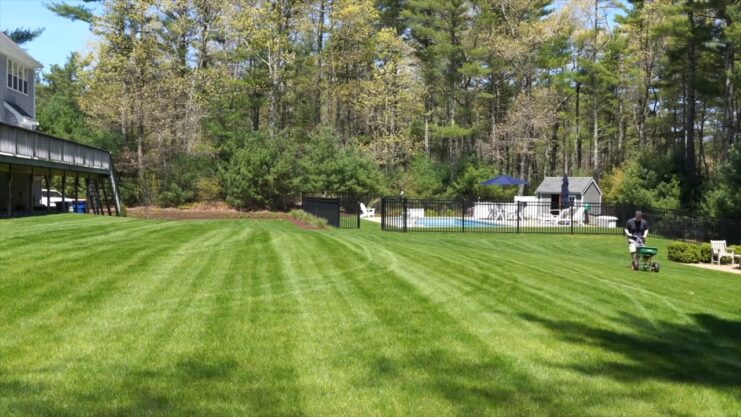
Mushrooms in your lawn and yard may be unsightly, but with the right knowledge and strategies, you can effectively banish these unwelcome intruders. From adjusting your lawn care routine to employing natural remedies and chemical solutions, there’s a wide range of tactics you can use to tackle the problem.
By understanding the cause of mushroom growth and addressing any underlying issues, you’ll be well on your way to reclaiming your pristine green space. Remember, perseverance is key—stay vigilant and keep experimenting with different approaches until you find the one that works best for your unique situation. Happy gardening!
Related Posts:
- 10 Ways to Get Rid of Skin Pigmentation: Nature's Best
- 10 Best Electric Riding Lawn Mowers 2024 - Ultimate…
- Curved Monitor: Pros And Cons - Should You Get It Or Not?
- Boosting Your Etsy Shop: Tips and Tricks to Get More Sales
- Is It Really Possible to Get Infected with HIV by…
- Top 6 Myths on How You Can Get Infected with HIV

